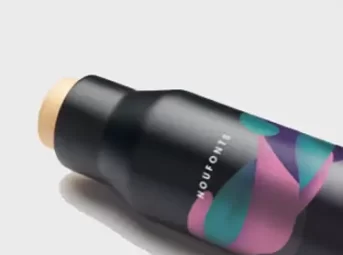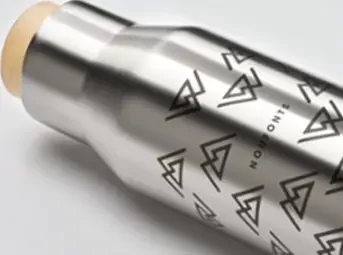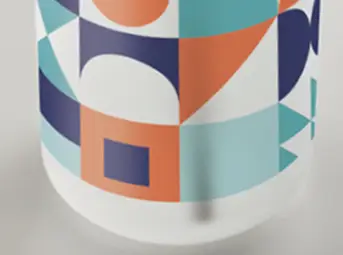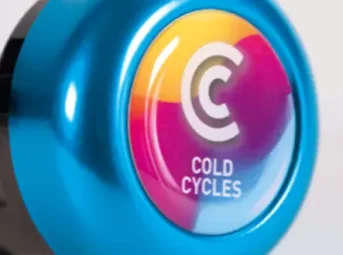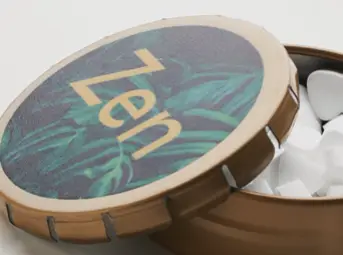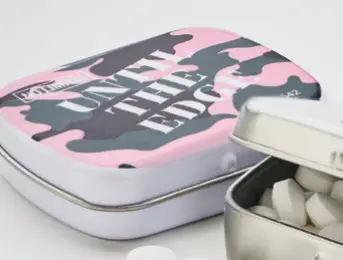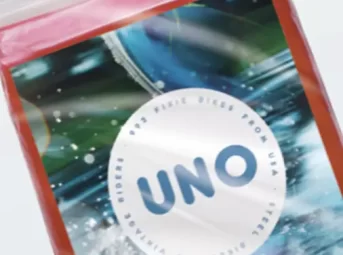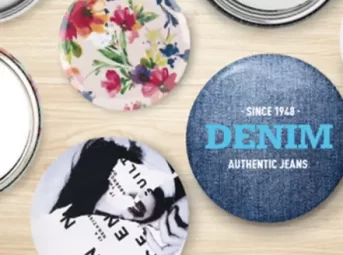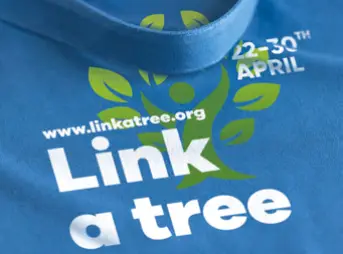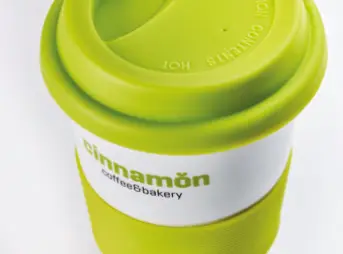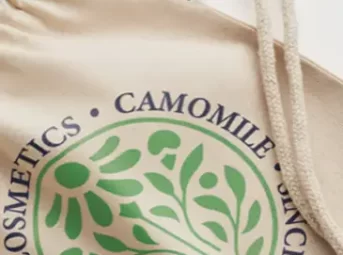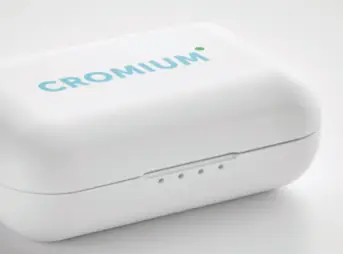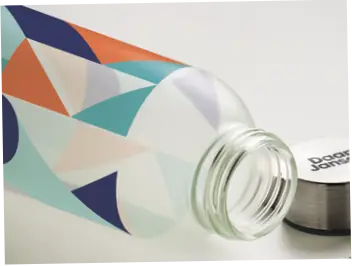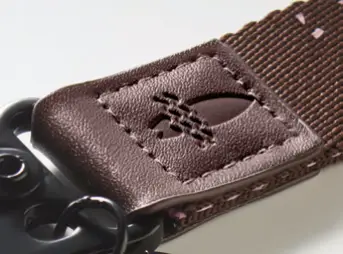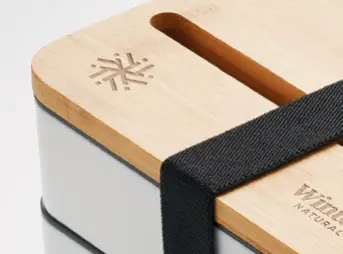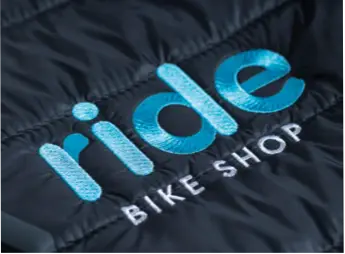How many promotional products printing methods can we do?
Have your promotional products printing logo printed with the most diverseprinting techniques has never been easier. These are the most important techniques for printing your logo.promoti
Digital printing 360
Compared to circular screen printing, it is possible to print full color images. UV ink technology does not release volatile organic compounds (VOC) into the atmosphere. In combination with a white underprint, the possibilities for transparent objects are unlimited.
Laser engraving 360
The next step in inkless options, now available on cylindrical products. Compared with conventional engraving, the engraving area is limited by the circumference of the cylindrical object. Can be used on mugs with handles. Best results on natural materials.
Sublimation
Printed with special ink on transfer paper,transferred to material using high temperatures. Known for high quality printed images, vibrant colors and accuracy of small details. Requires a white background and polyester material or coating.
Doming
Digitally printed full color sticker on self-adhesive foil covered with a thick layer of transparent epoxy resin. The resin protects the image and gives a premium, glossy look and finish.
Digital label
A flexible way to use different products in almost to provide every shape with a logo. The self-adhesive polymer film fits into positions that are not accessible with other printing techniques.
Digital printing
UV flat bed inkjet technology makes it possible Print vibrant full color images on various materials – artificial and natural. Compared to Digital Printing 360 – this technique requires flat, sturdy products. A white underprint is possible.
Digital inlay
Xerographic full color print on paper is perfect way to convey a message to your customer. This technique is best for text or images and can be used, for example, as a manual or messages on articles where this is the only option available.
Button print
The best way to stand out with this full color button. Printed using xerographic technology on paper, assembled with glossy finish to give premium look.
Digital transfer
Technique of digitally printed image on foil with heat-activated adhesive, applied under high temperature and pressure. Provides full color photographic quality and sharp details. Gives a high-quality appearance, especially on textiles.
Transfer
Conventional method of indirect printing using screen printing. Can be applied to materials and places where direct screen printing is not possible, in addition, up to 8 different colors can be used on one image. Special colors available.
Ceramic transfer
Technique in which the image is printed on paper with special ink and transferred using water film and heated at extreme temperatures to ensure durability. Specific colors available. Recommended for ceramic materials.
Screen printing
Image exposed on a screen, which forces ink onto the marked surface. The biggest advantage of this technique is the large printing area on flat surfaces, on almost any material and the possibility of using special colors. First choice for textiles
Pad printing
Image transferred from engraved cliché using a silicone tampon. Most versatile printing technique on almost all hard shapes and materials. Maximum 4 colors. Special colors available. Cost-efficient technology on small items.
Circular screen printing
Evolution of screen printing that makes this printing method possible on cylindrical and conical products. Compared to pad printing, this technique allows a much larger printing surface. Can be used on mugs with handles. Maximum 1 color. Special colors available.
Blind printing
The engraved metal stamp is heated and pressed against the material, creating a permanent imprint in the shape of the customer’s design. The best results are possible are achieved on leather, PU and cardboard materials, such as notebooks and organizers.
Laser engraving
The result is permanent by selectively removing microscopic layers of material, leaving visible marks on the surface. The color varies depending on the material processed. Best results on natural materials (metals, wood, bamboo, etc.).
Embroidery
Computer-controlled stitching makes it possible to sew complex designs into the material, creating a high-quality and permanent result. Possible on textiles such as bags, t-shirts, jackets, caps, etc.
You probably don’t think much about how those t-shirts, cups, and pens with your favorite company’s logo are made. But there are actually several different printing methods used to put logos and designs on promotional products. In this article, we’ll look at the most common techniques: screen printing, digital printing, sublimation, pad printing, and embossing. Each process has its pros and cons depending on the item being printed and the type of design. We’ll break down the differences so you can better understand the options next time you need branded swag for your business. Let’s dive in and explore the wild world of promotional product printing!
Overview of Printing Methods
The Classics
When it comes to putting designs on products, there are a handful of tried-and-true printing methods that have been around for ages. You’ve probably heard of screen printing and embroidery – the old reliables for t-shirts, hats, and other apparel. But did you know they can be used for so much more?
Screen printing utilizes a stencil-like technique to transfer ink onto virtually any flat surface. It’s an incredibly versatile method that’s great for logos, graphics, text – you name it. And embroidery? Well, that magic needle does more than just monograms. Complex designs can be stitched onto bags, towels, blankets – the possibilities are endless.
The New Kids on the Block
Of course, as technology marches on, new printing techniques have emerged to shake things up. Digital printing, for instance, skips the whole screen setup and goes straight to getting vibrant full-color designs on products using specialized printers and inks. Talk about efficiency!
Then there’s laser engraving – using intense laser beams to etch permanent markings into materials like wood, leather, and metal. Pretty cool, right? It gives a sophisticated, professional touch that really makes products stand out.
The Versatile Squad
But wait, there’s more! Techniques like pad printing and heat transfers offer even more options to get your branding on all sorts of items. The key is understanding which method works best for different products, materials, and design needs.
With so many printing possibilities out there, the world is your oyster when it comes to promotional products. It’s just a matter of exploring the options and finding the perfect fit for your brand. So get out there and start creating!
Impact Printing Methods: Letterpress, Flexography, and Screen Printing
Old-School Charm
Let’s talk about some old-school printing methods that are still going strong today – letterpress, flexography, and screen printing. These impact printing techniques have been around for ages, but they’ve managed to stay relevant by adapting to modern times.
Letterpress printing is like the hipster of the printing world. It’s all about that vintage vibe, creating a tactile, embossed impression on paper or other materials. Think of those fancy wedding invitations or artisanal posters that just ooze character.
Flex Appeal
Flexography, on the other hand, is the workhorse of the bunch. It’s perfect for printing on all sorts of surfaces, from paper to plastics, and even metal. This method uses flexible relief plates made of rubber or photopolymer to transfer ink onto the substrate. You’ll find flexographic printing everywhere, from food packaging to labels and even wallpaper.
Screen Time
Last but not least, we have screen printing. This versatile technique uses a mesh screen to transfer ink onto a wide range of materials, from t-shirts and tote bags to ceramics and even circuit boards. It’s like the cool kid on the block, responsible for all those funky designs on your favorite merch.
What’s great about these impact printing methods is that they offer a unique, handcrafted look that digital printing just can’t replicate. They add a touch of personality and charm to all sorts of products, making them perfect for promotional items, art prints, or anything that needs a little extra oomph.
Non-Impact Printing Methods: Digital, Inkjet, and Offset Lithography
Digital Printing
Hey, let’s talk about digital printing. This baby is all about using toner or solid ink to transfer images directly onto the material. No plates, no mess – just clean, efficient printing. It’s super versatile and great for small print runs or customized designs. Just imagine printing a unique logo or message for every customer!
Inkjet Printing
Next up, we’ve got inkjet printing. This method sprays tiny droplets of liquid ink onto the surface. It’s like having a microscopic paint gun, but way more precise. Inkjet is ideal for printing vibrant colors and detailed designs on all sorts of materials, from paper to fabric and even rigid surfaces. The possibilities are endless!
Offset Lithography
Last but not least, offset lithography is the big kahuna of printing methods. It’s a bit more complex, using plates to transfer the image onto a rubber blanket, and then onto the printing surface. But boy, does it deliver when it comes to high-volume, high-quality printing. From magazines to posters, if you need crisp, consistent results in large quantities, offset lithography is your go-to.
The best part? With these non-impact printing methods, you can bring your designs to life without physically pressing anything onto the surface. It’s like magic, but with ink and precision technology!
3D Printing: A Revolutionary Method
An Innovative Process
3D printing, also known as additive manufacturing, is a groundbreaking technology that is rapidly transforming the way we create and produce objects. Unlike traditional manufacturing methods, 3D printing builds objects layer by layer, allowing for intricate designs and customization.
Endless Possibilities
With 3D printing, the possibilities are virtually endless. From prototyping and product development to art and architecture, this technology is being utilized in diverse industries. Imagine holding a replica of an ancient artifact or a scaled model of a building in the palm of your hand – 3D printing makes it possible.
Sustainable Solution
One of the greatest advantages of 3D printing is its potential to reduce waste and promote sustainability. By producing objects on-demand and using only the necessary materials, this method minimizes excess production and resource consumption. It’s a game-changer for environmentally conscious businesses and individuals alike.
Personalization at Its Best
3D printing opens up a world of personalization like never before. Whether you’re creating custom jewelry, medical devices tailored to individual needs, or unique promotional products, this technology allows for unparalleled customization. Imagine the impact of giving your customers truly one-of-a-kind items that reflect their individuality.
Accessibility and Affordability
As 3D printing technology continues to evolve, it’s becoming increasingly accessible and affordable for businesses and individuals. Desktop 3D printers are now available for home and office use, empowering creators and entrepreneurs to bring their ideas to life without the need for expensive industrial equipment.
Shaping the Future
3D printing is more than just a technological marvel – it’s a revolution that’s reshaping industries and redefining what’s possible. From medical breakthroughs to sustainable manufacturing, this innovative method is paving the way for a future where imagination knows no bounds. Embrace the possibilities and explore how 3D printing can transform your business and products.
Choosing the Right Printing Method for Your Needs
No matter what kind of promotional product you need, choosing the right printing method is crucial. It can impact everything from image quality to durability and cost.
Consider the Material
The material of your product plays a big role in determining the best printing option. For example, screen printing works great on flat, solid surfaces like t-shirts or tote bags. But for irregular shapes or textured items, you may want to explore other methods like pad printing or heat transfers.
Think About Usage
How will the product be used? Products that’ll see a lot of wear and tear, like drinkware or sports equipment, need a super durable imprint. Here, methods like laser engraving or embroidery would be ideal choices. But for one-time use items like banners or signage, a more economical digital printing process may suffice.
Prioritize Color Accuracy
If color accuracy is vital – like for branded merch or photography samples – you’ll want a printing process that captures every shade with precision. Digital printing methods like direct-to-garment or dye sublimation could be worth considering here.
Factor in Quantity
Thinking of ordering in bulk? Certain printing techniques, like screen printing, become way more cost-effective with higher quantities. Whereas digital methods can be pricier but better for smaller runs or samples.
Look at Turnaround Times
Need those items ASAP? Digital printing usually has faster turnarounds versus more specialized techniques. But lead times can vary by supplier, so it’s always smart to plan ahead.
No single printing method is perfect for every job. But by weighing factors like material, usage, color demands, quantities, and deadlines, you can find the printing sweet spot to make your promotional products pop.
Conclusion
So there you have it – a quick tour through some of the main printing methods available for making customized promotional items and swag. From tried and true techniques like screen printing and embossing to newfangled digital printing, there are plenty of options to choose from. Each method has its own unique strengths and limitations, so think about the specifics of your project and audience. And don’t be afraid to ask your printer for advice! With so many choices, it can feel overwhelming at first. But the right printing method can take your design from concept to reality in the best possible way. Now that you’re armed with this intro knowledge, you’ll be ready to pick the perfect process and create promotional products that make a bold impression.

